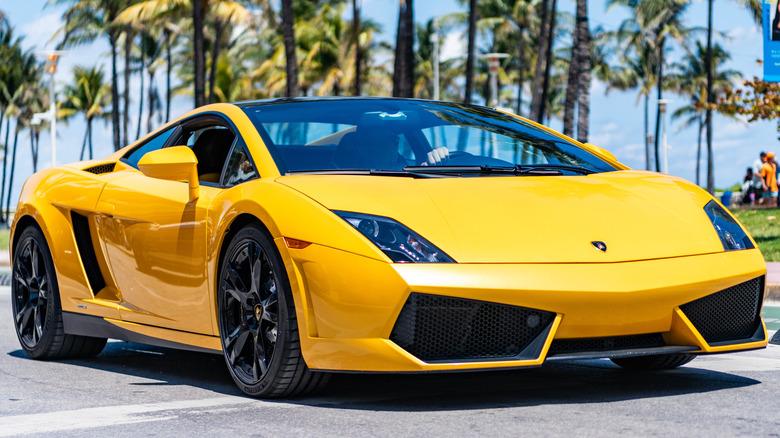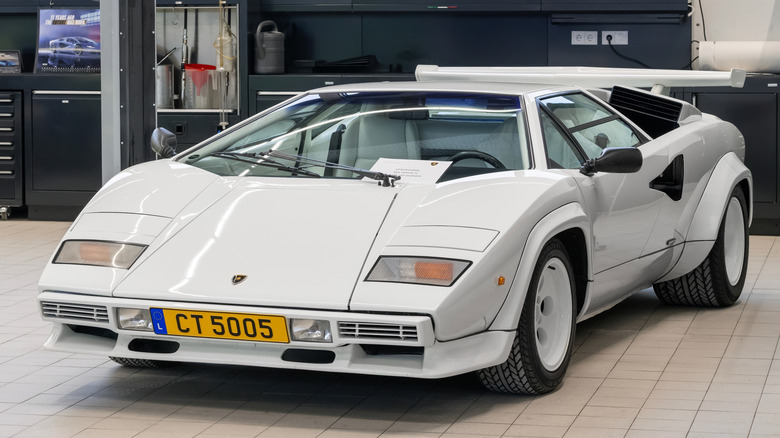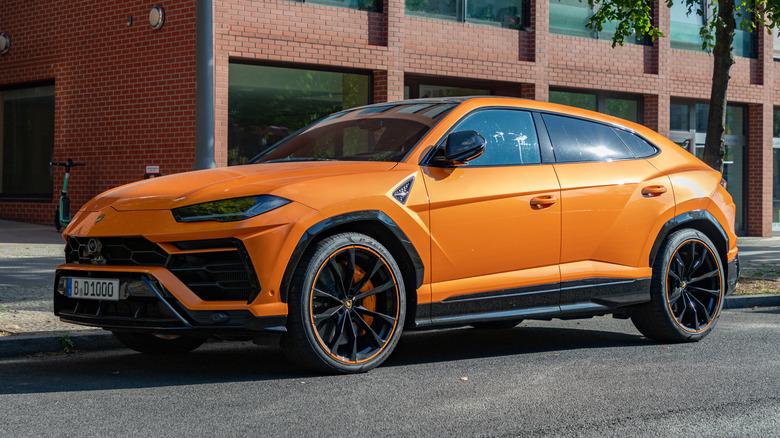Where Are Lamborghini's Cars Made, And Who Owns The Company Today?
In 1963, the Lamborghini company was founded by a wealthy tractor manufacturer named Ferruccio Lamborghini, who set out to build the perfect grand tourer after being dissatisfied with the frequent clutch failures in his Ferrari. According to popular lore, when he brought this up to none other than Enzo Ferrari, Enzo reportedly replied, "You are a tractor driver, you are a farmer", an insult from Ferrari that led to the birth of Lamborghini cars, more specifically, the 350 GT.
Since then, Automobili Lamborghini has been producing sports cars without interruption, though the company has gone through several major restructuring cycles that saw its ownership change hands multiple times. Today, it is owned by Volkswagen, which acquired Lamborghini in 1998 through its Audi AG division for $110 million, marking the beginning of the modern era of the Lamborghini brand we all know today. Lamborghini cars are made in Sant'Agata Bolognese, near Bologna, Italy, where the brand has had its headquarters since it was founded. As of 2025, Lamborghini relies on only two factories in the world, and both are located in Sant'Agata Bolognese. Over the past two decades, the company has grown into a major supercar brand, all while remaining rooted in the same small Italian town where it was born.
Lamborghini's pre-Volkswagen era
The majority of the company was owned by its founder, Ferruccio Lamborghini, all the way from 1963 to 1972, when Ferruccio sold 51% of the company due to financial problems to Georges-Henri Rossetti. Between this and the Volkswagen era, the company has changed hands a few times, including being owned by the Chrysler Corporation in the early 90s and, after that, by an Indonesian investment fund called Megatech, which sold it to VW.
Before VW took over, the company was struggling, and sales were very low. The Lamborghini Countach production ran for 16 years, and Lamborghini only managed to produce 1,999 units. The Lamborghini Diablo didn't fare much better with a total run of 2,884 units in its 11-year life cycle, and that's including all the special editions and limited production runs. The last pre-VW era Lamborghini was the Lamborghini Diablo SV, according to many enthusiasts, also the last "true Lamborghini."
However, overall reception of the Countach and the Diablo on the road was that neither of them was the best to drive or live with, though both are still appreciated for what they are. According to Jonny Lieberman of MotorTrend, none of the Countach quirks seemed to matter. He said, "I even smiled when I realized I had to remove my shoes to drive it, and when it became known the Countach isn't exactly waterproof, as evidenced by my soaking-wet socks. None of it mattered. The car, despite all its quirks, is perfect."
How Lamborghini became a success story
The very first Lamborghini developed under Audi was the 2001 Lamborghini Murcielago. Over its nine-year production run, Lamborghini built a total of 4,099 units — significantly more than the Diablo or the Countach. However, the very first major Lamborghini success story under VW came with the Lamborghini Gallardo, as Lamborghini went on to sell more than 14,022 examples.
This was followed by the Lamborghini Aventador, which sold 11,465 units, while its V10 sibling — the Huracán, successor to the Gallardo — moved more than 25,000 units over 10 years of production. Even though these numbers are indeed impressive, Lamborghini's SUV, the Urus, is on track to become the best-selling Lamborghini of all time. Lamborghini enjoyed a record-breaking year in 2024, selling more cars than ever, a total of 10,687 in a single year.
This brings us to the current era of Lamborghini, where new models such as the Revuelto and the Temerario aim to continue the upward trend. Lamborghini has also revealed its upcoming Lamborghini Lanzador EV concept, set to be presented sometime in 2028. Given the record-breaking sales in 2024, Lamborghini's future seems bright, and if history is anything to go by, the best may still be yet to come.


